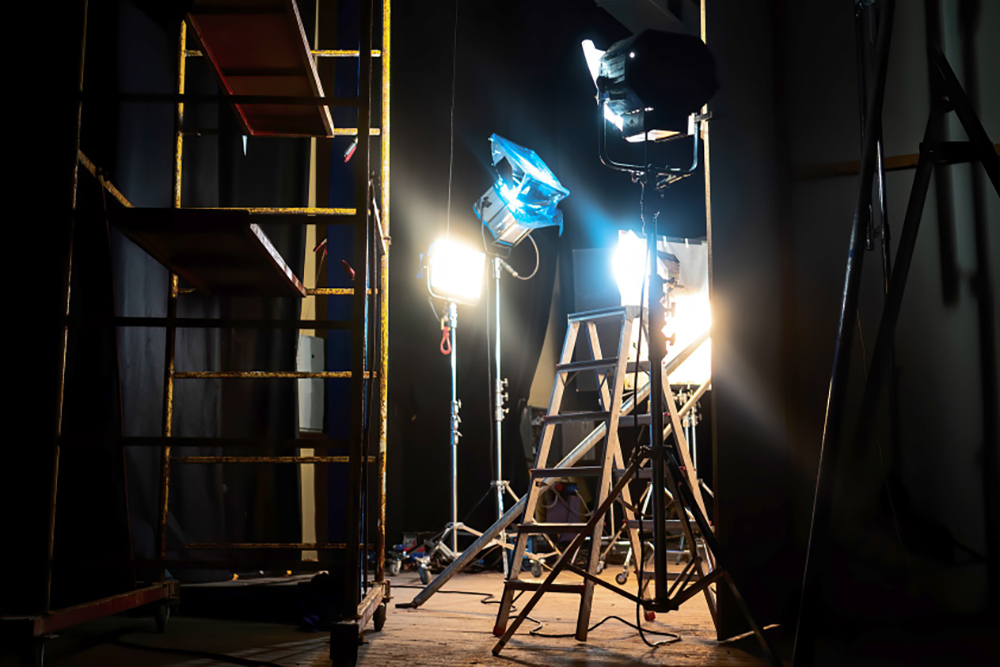Illuminating the Art of Lighting in Film Production

In the world of film production, light is not just a tool to see; it’s a storyteller, a feeling, a hidden hand guiding the audience through the director's vision. In this exploration, we venture into the lighting department, an often-underestimated art form that is critical to the success of any visual media project. Whether it's creating a dreamy atmosphere for a romantic scene or casting ominous shadows for a thriller, lighting is a language that speaks volumes behind the lens.
Orlando's Glare in the Film Industry
The sun-kissed city of Orlando isn't just home to magical theme parks and endless sunshine; it's also a budding hub for the film industry. With a rapidly growing film production market, Orlando's demand for skilled lighting technicians is reaching new heights. The city's unique blend of urban landscapes and natural beauty offers a versatile canvas for filmmakers.
Why Lighting Matters in Orlando
In the entertainment business, Orlando has become synonymous with the art of visual storytelling. Local production companies, independent filmmakers, and major studios flock to the city for its diverse locations, professional resources, and experienced talent. Lighting is a paramount element that cannot be overlooked, especially in a region where natural light fluctuates with unpredictable weather.
The Role of Grip Lighting in Orlando Film Production
Grip lighting plays a pivotal role in the Orlando film industry. Not only does it encompass the technical aspect of lighting, but also the physical elements of positioning and adjusting lights to achieve the desired effect. The grip department is responsible for creating an environment where actors can perform comfortably without the interference of lighting equipment.
Tiki Grip & Electric - A Beacon in Lighting Services
Navigating the intricate world of lighting can be daunting, but Tiki Grip & Electric stands as a beacon of knowledge and service in Orlando's film community. Their seasoned crew doesn't just offer equipment; they provide expertise on set to ensure that the visual narrative aligns with the director's creative intent.
The Fundamentals of Lighting Design
The magic of the silver screen comes alive through the mastery of lighting. Each film, scene, and shot has its own lighting design that contributes to the emotional and narrative arc. Understanding the basics sets the stage for a cinematographic masterpiece.
Natural vs. Artificial Light in Film
The contrast between natural and artificial light is as old as cinema itself. Directors often weave a narrative thread using the time of day as a cue for the audience. Artificial light allows for complete control over the environment, but skilled technicians are needed to mimic the subtlety of natural light convincingly.
Creating Depth and Atmosphere
Lighting has the power to transform a two-dimensional image into a lifelike world. By playing with gradients and shadows, the lighting team can create a sense of depth that draws the viewer into the screen. The atmosphere is developed through the color of light, known as its temperature, which ranges from warm (reddish hue) to cool (bluish hue), setting the emotional tone of the scene.
Key, Fill, and Back Lights
The lighting department uses a standard setup called the three-point lighting technique, consisting of the key light, fill light, and back light. The key light is the primary source that defines the character's shape, color, and texture. Its intensity is balanced by the fill light, which softens shadows without adding more. Meanwhile, the back light separates the character from the background, giving them a subtle glow that adds dimension.
Beyond the Set: Lighting in Post-Production
The magic doesn't stop when the cameras do. Post-production lighting plays an equally important role in the final look of a film. Through techniques like color grading and compositing, a new layer of meaning can be added, or an old one skewed.
The Art of Color Grading
Color grading is the process of altering the color of a film. It's not just about fixing mistakes made on set; it's a creative tool that can change the mood and tell a different story. By enhancing certain colors with the lights and shadows already present, filmmakers can add a layer of depth that wasn't there before.
Compositing - Merging Light in Separate Layers
Compositing is the combining of visual elements from separate sources into single images. This post-production technique utilizes lighting effects to stitch together scenes that were shot separately. The challenge lies in ensuring that the lighting matches seamlessly, which requires a keen eye for detail and an understanding of the physics of light.
The Future of Lighting in Film
As technology continues to advance, the future of lighting in film looks brighter than ever. LED lighting systems, virtual production, and real-time rendering are just a few of the innovations that are redefining the possibilities of lighting design. The role of the lighting department will evolve, but its fundamental importance in storytelling will remain unchanged.
Conclusion
In the end, lighting is about more than just making things visible. It's a powerful tool that shapes the emotional landscape of the film. From the sun-drenched streets of Orlando to the shadowy corners of a noir film, the lighting department works silently behind the scenes, bringing the director's dreams to life. For filmmakers and audiences alike, understanding the complexities of lighting enhances the appreciation of the art and craft of cinema. If you're looking for grip lighting in Orlando, FL, contact Tiki Grip & Electric today for more information.